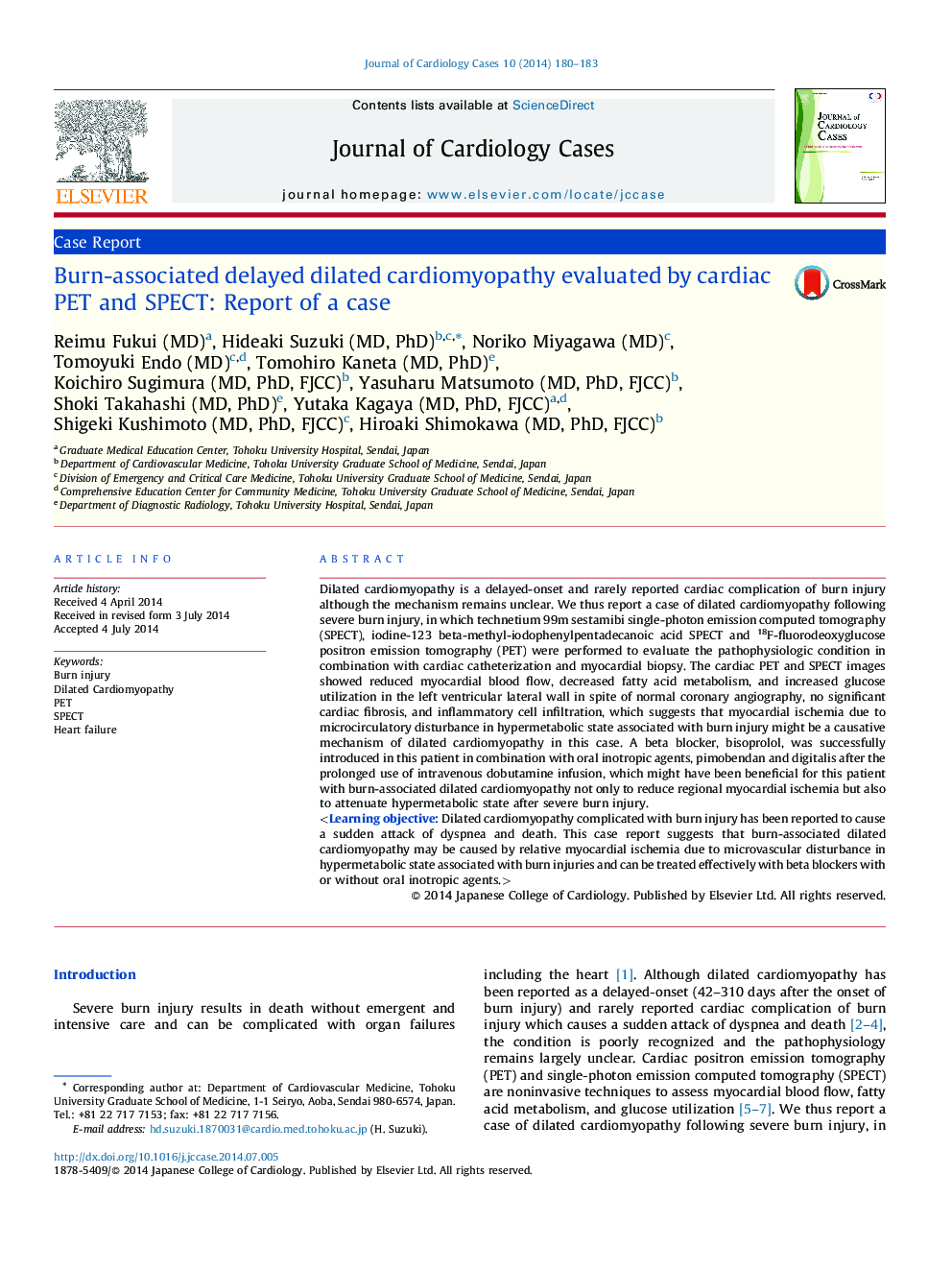| Article ID | Journal | Published Year | Pages | File Type |
|---|---|---|---|---|
| 5984561 | Journal of Cardiology Cases | 2014 | 4 Pages |
Dilated cardiomyopathy is a delayed-onset and rarely reported cardiac complication of burn injury although the mechanism remains unclear. We thus report a case of dilated cardiomyopathy following severe burn injury, in which technetium 99m sestamibi single-photon emission computed tomography (SPECT), iodine-123 beta-methyl-iodophenylpentadecanoic acid SPECT and 18F-fluorodeoxyglucose positron emission tomography (PET) were performed to evaluate the pathophysiologic condition in combination with cardiac catheterization and myocardial biopsy. The cardiac PET and SPECT images showed reduced myocardial blood flow, decreased fatty acid metabolism, and increased glucose utilization in the left ventricular lateral wall in spite of normal coronary angiography, no significant cardiac fibrosis, and inflammatory cell infiltration, which suggests that myocardial ischemia due to microcirculatory disturbance in hypermetabolic state associated with burn injury might be a causative mechanism of dilated cardiomyopathy in this case. A beta blocker, bisoprolol, was successfully introduced in this patient in combination with oral inotropic agents, pimobendan and digitalis after the prolonged use of intravenous dobutamine infusion, which might have been beneficial for this patient with burn-associated dilated cardiomyopathy not only to reduce regional myocardial ischemia but also to attenuate hypermetabolic state after severe burn injury.
